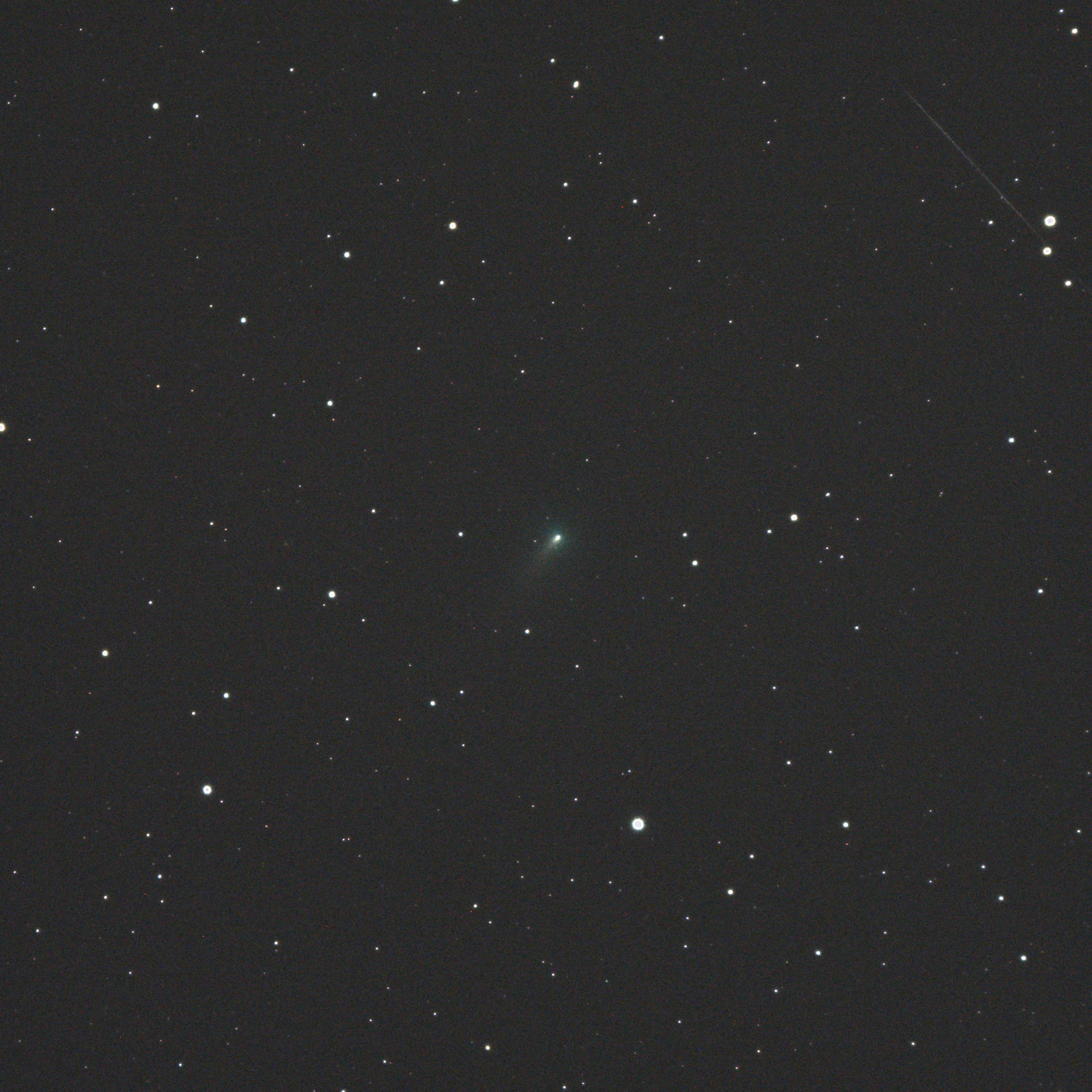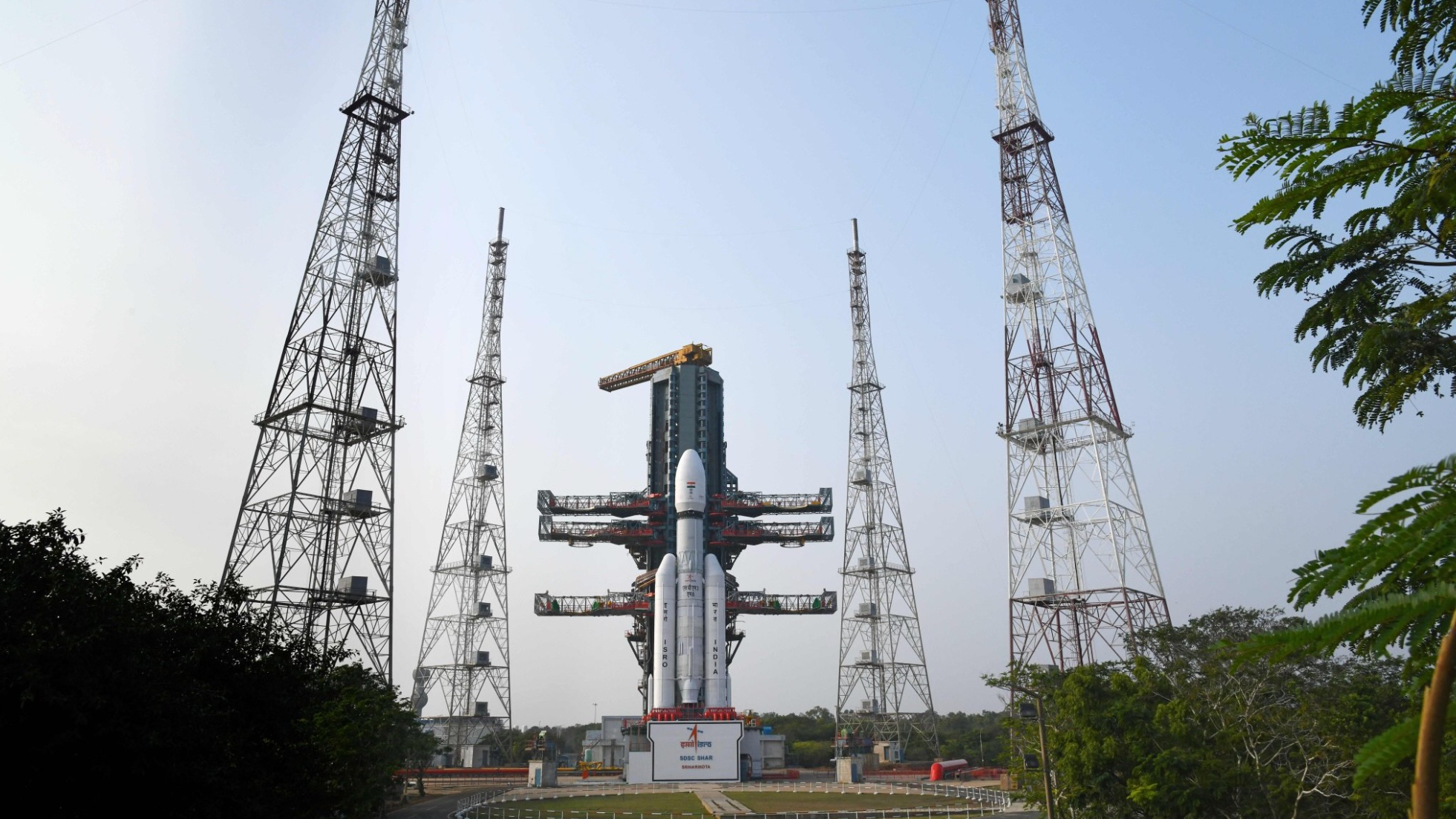You can see the bright Comet Leonard in a free live webcast tonight
The event begins at 11 p.m. EST (0400 GMT on Dec. 4).
Editor's Note: Astronomer Gianluca Masi will host another a free, online livestream of comet C/2021 A1 Leonard, also known as Comet Leonard, tonight, Dec. 7, and you can watch it live in the window above. The webcast, from Masi's Virtual Telescope Project site, will begin at 11 p.m. EDT (0400 GMT Dec. 8).
Masi hosted an earlier webcast last week when Comet Leonard passed through a star cluster, but the livestream was spoiled by bad weather over its observing site. Masi is hoping for better weather tonight to see the comet.
A live webcast will track a newly found comet as it passes by a dense collection of stars visible in Earth's sky.
The bright Comet C/2021 A1 (Leonard), also known as Comet Leonard, will fly by the globular cluster Messier 3 in Canes Venatici tonight (Dec. 2). Both objects will be visible in binoculars from dark-sky locations, and will be close enough together to view in a single telescope field of view for a few hours.
But for those who find it's too cold, light-polluted or otherwise inconvenient to view the flyby, the Rome-based Virtual Telescope Project will broadcast the event starting at 10 p.m. EST Thursday (0300 GMT Friday, Dec. 3). Editor's note: This webcast is dependent on good weather at the observing site.
"At that very moment, the two objects will be very close, apparently, in the sky," project founder Gianluca Masi told Space.com in an e-mail. "We will see the comet tail slowly moving in front of the cluster."
Comet Leonard will make a great target for amateur astronomers in December's night sky. If you need a telescope of binoculars to see planets in the sky, check out our guide for the best binoculars deals and the best telescope deals available right now. Our best cameras for astrophotography and best lenses for astrophotography can also help you pick the best imaging gear to spot the comet.
Related: Photos: Spectacular comet views from Earth and space
Breaking space news, the latest updates on rocket launches, skywatching events and more!
If you miss the broadcast, there are still two other chances where you can catch the comet at its best: one using your astronomy gear and another through a second event with the Virtual Telescope Project.
On the night of Friday (Dec. 3) during EST hours, the comet will pass by the fainter globular cluster NGC 5466, also known as the Snowglobe Cluster, in the night sky. Then on Tuesday (Dec. 7), the Virtual Telescope Project plans a second broadcast focused on Leonard.
That webcast will start at 11 p.m. EST (0400 GMT) when the Earth is close to the comet's orbital plane or path through space, which should provide a relatively bright view, according to Masi.

There's a chance the Dec. 8 broadcast will include a view of Leonard's "anti-tail", Masi said. This is a spike of light that is opposite to the comet's usually visible tail of gas and dust. This feature is a thin sheet of dust expelled from comets, which is best visible as the Earth moves through the comet's orbital plane.
The comet was found by astronomer Gregory J. Leonard on Jan. 3 at the Mount Lemmon Infrared Observatory, approximately 17 miles (27 km) northeast of Tucson, Arizona.
Leonard hasn't reached peak brightness yet; it's rare for comets to be naked eye brightness, but amateur astronomers are keeping an eye out just in case.
Follow Elizabeth Howell on Twitter @howellspace. Follow us on Twitter @Spacedotcom and on Facebook.

Elizabeth Howell (she/her), Ph.D., was a staff writer in the spaceflight channel between 2022 and 2024 specializing in Canadian space news. She was contributing writer for Space.com for 10 years from 2012 to 2024. Elizabeth's reporting includes multiple exclusives with the White House, leading world coverage about a lost-and-found space tomato on the International Space Station, witnessing five human spaceflight launches on two continents, flying parabolic, working inside a spacesuit, and participating in a simulated Mars mission. Her latest book, "Why Am I Taller?" (ECW Press, 2022) is co-written with astronaut Dave Williams.

